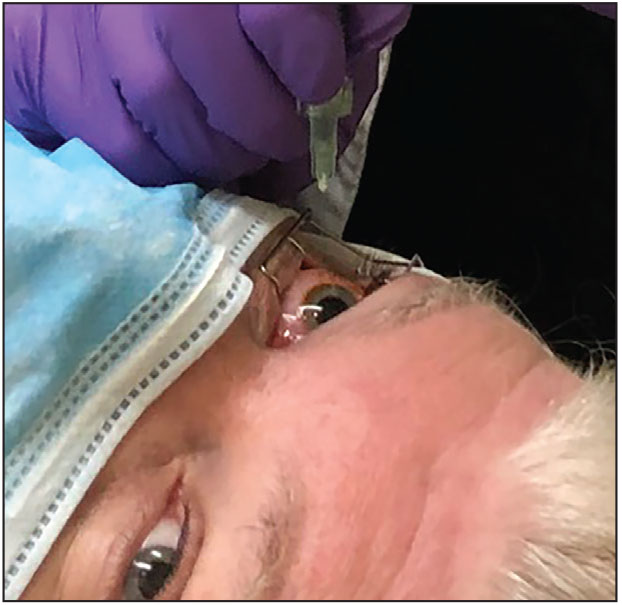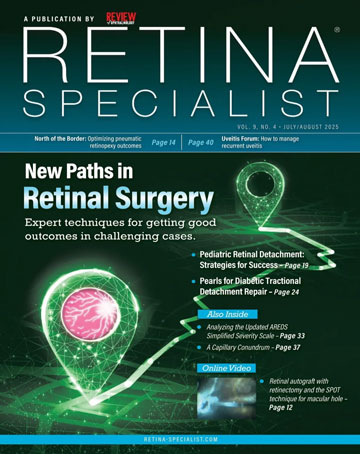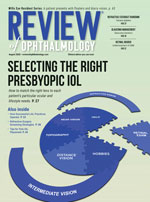Because diabetic macular edema may manifest at any disease stage and affects around 7 percent of those with diabetes, researchers are eager to identify possible biomarkers for DME.
In a newly published study, investigators specifically looked at platelet-to-neutrophil ratio (PNR) for diagnostic value in DME occurrence in patients with DR. The study included 366 total patients who were split into four groups: a DME group, a DR group without DME, a diabetes mellitus group without DR and a control group. Each person was classified into one of three DME types via OCT features of diffuse retinal thickening, cystoid macular edema and serous retinal detachment.
Upon analysis, the DME group exhibited much lower PNR levels compared with the other three groups; however, this didn't differ across DME subtypes based on OCT. It was found via modeling that PNR could better predict DME, with a cut-off PNR value of 68.5 yielding a sensitivity of 80.2 percent and specificity of 75.6 percent. Multivariate analysis indicated a PNR ≤68.5 was an independent risk factor for DME occurrence in DR patients. In general, DR patients with a lower PNR were found more likely to develop DME.
Upon discussion, the authors of the study highlight that emerging research has characterized platelets as a type of immune and inflammatory cell. They play a vital role in DR and DME pathogenesis, with enhanced platelet activation and aggregation being significant contributors to vascular complications seen with diabetes. Related to this, platelet level reduction has been seen in DR patients when compared to those without retinopathy.
As the authors explain, there are many reasons this may be the case. One involves their hypothesis consumption during coagulation mainly contributes to decreased platelets in patients with DR. Increased platelet consumption during clot formation is caused by abnormal platelet function and activation of the coagulation cascade, seen in a hypercoagulable state in diabetes. Another reason is due to inflammatory cytokines and excessive reactive oxygen species which can damage platelets, in turn leading to premature circulation clearance. What’s more, the abnormal vascular endothelium seen in DR and DME lends to loss of survival of normal platelets.
Conversely, neutrophils, when seen in elevated systemic counts, have been associated with DR severity and presence. Neutrophil activation and recruitment are promoted with chronic hyperglycemia to the retinal microvasculature, leading to worse inflammation and vascular leakage.
In discussion of both platelets and neutrophils, the authors relay that decreased platelets and increased neutrophils can lead to a decreased PNR. Since this was observed in the current study, the authors believe that, “consequently, PNR holds promise as a valuable diagnostic tool for detecting DME, offering potential improvements in risk stratification and management strategies for DR patients.”
REFERENCE
1. Sun H, Li Y, Liu S, et al. The diagnostic value of platelet-to-neutrophil ratio in diabetic macular edema. BMC Ophthalmol. 2025:25:167.
Initial Anti-VEGF Usage Predicts Treatment Burden
 |
Anti-VEGF drugs are known to be effective treatments for exudative age-related macular degeneration, but researchers of a recent study sought to determine the proportion of patients receiving “intensive” treatment (injections every eight weeks or less) among those being followed for the condition. They found that one-fourth of subjects required intensive treatment, but even with this indicator of severity, the patients were able to maintain their visual acuity after five years.
A retrospective single-center “real-life” study was conducted in France on patients treated for wet AMD to look at intensive treatment. A subgroup analysis compared patients who were able to extend their treatment interval (Group 1) vs. those who remained in intensive treatment (Group 2). The mean dosing interval in each cohort was 13.7 weeks for Group 1 and 7.4 weeks for Group 2 subjects.
A total of 301 records were analyzed, with 24.9 percent of the eyes considered under intensive treatment. The mean age was 84 and 61 percent of subjects were men. Type 1 choroidal neovascularization (CNV) accounted for 64 percent of the cohort, type 2 CNV represented 29.3 percent and type 3 was involved in 6.7 percent. The mean follow-up was 5.6 years.
Patients requiring intensive treatment represent about a quarter of the AMD population. “This could be explained by changes in the injection profiles we analyzed, showing that less than half of these intensively treated patients (44 percent) were able to achieve the >Q8W dosing interval, but only after a very long mean time of 4.5 years of intensive treatment,” the researchers wrote in their paper for the journal Eye. “This long time could be explained by the slow change in neovascular membrane, which was initially very active and eventually became fibrosed over time.”
The efficacy of anti-VEGF therapy was confirmed with the VA remaining stable and, in some cases, improving in the long-term. Group 2 (<Q8W dosing interval) had better VA , which could be explained by the lower rate of atrophy as well as the high frequency of injections and good patient adherence, the authors wrote. “The mean follow-up duration was longer for Group 1 than for Group 2 (7.4 and 4.2 years, respectively), and we compensated for this bias by analyzing the VA and anatomical criteria at fixed timepoints (two, three, four and five years),” they explained.
Initially intensively treated eyes with type 1 CNV were more likely to remain intensively treated in subsequent years.
Regarding anatomical biomarkers, only subretinal fluid height was really impacted by intensive treatment, with a significant drop from the first year of treatment, the authors noted. “Conversely, the pigment epithelial detachment height and the central retinal thickness remained fairly stable and unchanged from the second year of treatment.”
The persistence of intraretinal fluid over time, found in about 70 percent of patients, could explain why the central retinal thickness didn't decrease, the authors explained in their paper, although subretinal fluid resorbed. “We observed that the eyes of group 1 had significantly less fluid than the persistent eyes of group 2, showing a better response, albeit partial, and suggesting their potential future fluid extent,” they wrote.
“These results showed the emergence of two almost equally represented profiles among intensively treated patients: those whose regimen remained persistent and those who were able to switch to longer dosing intervals, even if this lengthening was achieved late,” the authors concluded. “The VA maintained at five years was another very good sign, as it is important information to provide to our intensively treated patients, to encourage them to continue injections and maintain their adherence.” RS
REFERENCE
1. Matagrin B, Fennin, Chirpaz N, et al. SIRE: Short interval in real life. Does intensive anti-VEGF treatment in the first year predict subsequent treatment burden in exudative age-related macular degeneration? Eye. March 20, 2025. [Epub ahead of print.]
In Brief Genentech announced the FDA approved Susvimo (ranibizumab injection) 100 mg/mL for the treatment of diabetic macular edema. The FDA decision was based on positive one-year results from the Phase III Pagoda study, revealing Susvimo demonstrated sustained vision improvements in DME patients, with safety consistent with the known safety profile for Susvimo. Opthea Discontinues Wet AMD Trials Opthea announced that since its trial pitting the combination of its drug OPT-302 and ranibizumab vs. standard of care alone for treatment of wet AMD (ShORe trial) didn’t meet its primary endpoint, the company will be shutting down both that trial and its COAST trial (which was analyzing the combination of OPT-302 and aflibercept). EyePoint Announces Six-month Results For Phase II VERONA EyePoint Pharmaceuticals announced “positive” six-month results for the ongoing Phase II VERONA clinical trial evaluating Duravyu (vorolanib intravitreal insert) for diabetic macular edema, an investigational sustained delivery therapy. EyePoint says the clinical trial met its primary endpoint with extended time to first supplemental injection vs. aflibercept control for both Duravyu doses. Optos Unveils Next-generation MonacoPro Optos launched MonacoPro, a “next-generation” ultra-widefield SLO and spectral domain retinal imaging solution. Upgraded OCT image quality is combined with integrated 200-degree single-shot Optomap imaging for better identification of macular pathology than fundus imaging alone, the company says. Bausch + Lomb Announces IOL Recall B+L announced a voluntary recall of intraocular lenses on its enVista platform. This action was taken as a cautionary measure after the company received reports of complications, the cause of which could not immediately be explained, it says. According to B+L, an increasing number of complaints of toxic anterior segment syndrome have been reported in conjunction with implantation of enVista Aspire and enVista Envy IOLs, and certain enVista monofocal lenses in the United States. |



